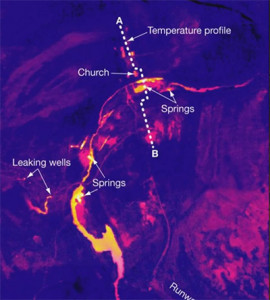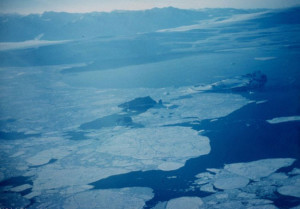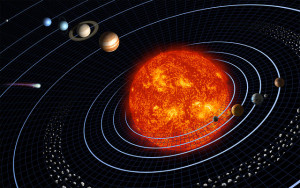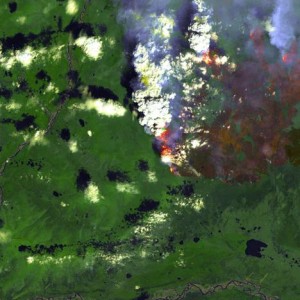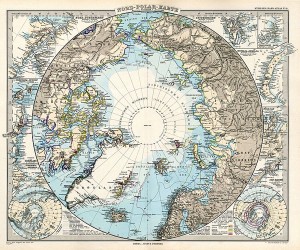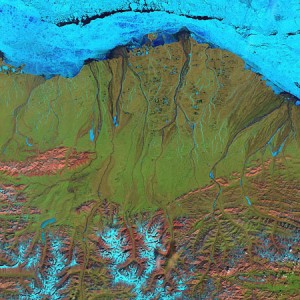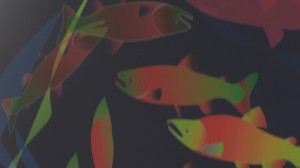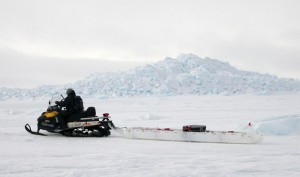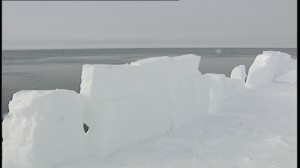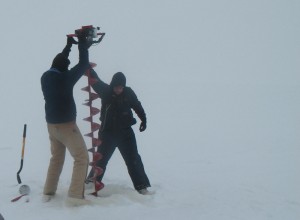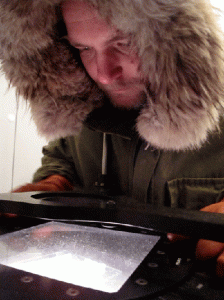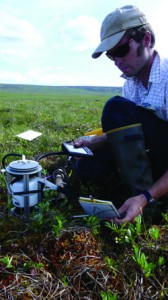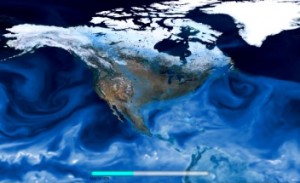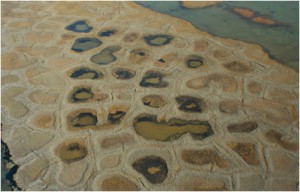Home » All Blogs » computational science
There’s a place where the perennially frozen ground of the Alaskan tundra is interrupted by 2 square miles [~ 5 km² ] of thawed soil. There, cottonwoods and thick brush grow among lazily meandering waterways. The Pilgrim Hot Springs are a pleasant symptom of the geothermal heat which warms the earth deep beneath Alaska’s Seward […]
Azara Mohammadi – To become a PhD candidate at the University of Alaska Fairbanks, Soumik Basu moved from his home in Kolkata, India to a region infamous for its “below zero” weather: Interior Alaska. Basu left warm weather and his family (not to mention his mother’s cooking) because “The climate is changing, so I wanted […]
“On any given day, sea ice cover in the oceans of the polar regions is about the size of the U.S.,” Thorsten Markus reminds us. He’s a research scientist at NASA’s Goddard Space Flight Center. “Far-flung locations like the Arctic and Antarctic actually impact our temperature and climate where we live and work on a […]
Laura Nielsen for Frontier Scientists – Cyclical changes in the way the Earth circumnavigates the Sun can influence Earth’s climate. Last week, we looked at Milankovitch’s assessments of orbital dynamics, including: orbital eccentricity, Earth’s tilt or obliquity, and the precession or change in orientation of the Earth’s axis of rotation which determines what direction each […]
Ned Rozell for UAFGI – The blackened scars that Alaska fires leave on the landscape may result in more lightning, more rain in some areas just downwind of the scars, and less rain farther away, according to two scientists. Nicole Mölders and Gerhard Kramm, both of the Geophysical Institute at the University of Alaska Fairbanks, […]
Liz O’Connell for Frontier Scientists – Fairbanks, Alaska, November 6, 2012 – The Arctic Region Supercomputing Center at the University of Alaska Fairbanks has a new CRAY Supercomputer Called FISH. As ARSC transitions from a centralized machine to a strategically upgradeable hybrid system, they advance scientific discovery. It is a large scale upgrade to benefit research. Scientists who use […]
Laura Nielsen for Frontier Scientists – Over eight thousand historical maps of Alaska are now available to the public through the United States Geological Survey’s Historical Topographic Map Collection. The collection includes maps of Alaska crafted as long ago as 1899, maps created to commemorate Alaska’s induction into statehood in January 1959, and more. Records of […]
Laura Nielsen for FrontierScientists We know that the Arctic holds unique climate conditions and a complex carbon balance. Tundra fires and thawing permafrost release carbon dioxide into the atmosphere, while unique ocean currents and cold waters prompt higher levels of ocean acidification. Methane emerges from sea and soil. The Arctic sea ice cover shrinks to increasingly startling extents. Plant life […]
Laura Nielsen for Frontier Scientists Will ocean acidification spell a watery grave for vital parts of marine ecosystems? Marine ecologist Jane Lubchenco, head of the National Oceanic and Atmospheric Administration, named ocean acidification global warming’s “equally evil twin.” * Burning fossil fuels — coal, oil, natural gas — cutting down forests and other post-industrial […]
Liz O’Connell for Frontier Scientists – Fairbanks, Alaska, October 2, 2012 – “As Alaska’s Research University UAF (University of Alaska Fairbanks) must continue to provide the best tools, ARSC is one of the most important tools available,” said Brian Rogers, Chancellor at the University of Alaska Fairbanks. And the Arctic Region Supercomputing Center’s new tool […]
Ned Rozell for UAFGI – As the northern end of the globe nods away from the sun at fall equinox, the amount of sea ice floating on the northern oceans is now at the lowest amount ever detected by satellites, a period that goes back to 1979. This new sea-ice minimum follows an extremely cold […]
Liz O’Connell for Frontier Scientists – Fairbanks, Alaska, September 4, 2012 – Three videos introduce the oceanographic modeling work from the University of Alaska Fairbanks (UAF). The video Modeling Ice in the Arctic, shows a regional ice model coupled with a global climate model. “The ice is not as stiff as it used to be,” said Kate […]
Ned Rozell for UAFGI – Minnesota is the Land of 10,000 Lakes, but Alaska has more than that in the great expanse of flatlands north of the Brooks Range. These ubiquitous far-north bodies of water — most of them formed by the disappearance of ancient, buried ice that dimples the landscape as it thaws — […]
Ned Rozell for UAFGI – Marc Mueller-Stoffels unscrews the top of a glass jar and invites a visitor to smell the powder inside. A sniff evokes the image of kayaking Prince William Sound or walking a beach in Southeast. “We call it ‘Instant Ocean,’” he says, returning the lid to the jar. Mueller-Stoffels, a doctoral […]
Marie Gilbert for UAF Cornerstone – As the Arctic warms, greenhouse gases will be released from thawing permafrost faster and at significantly higher levels than previous estimates, according to survey results from 41 international scientists published in the Nov. 30 issue of the journal Nature. Permafrost thaw will release approximately the same amount of carbon […]
Liz O’Connell for Frontier Scientists – Fairbanks, Alaska, April 3, 2012 – “An artist that discovers a new process or new material– the same thing is happening in computation. People are constantly embarking on new discoveries; that’s what gets people excited about science,” said Greg Newby, Arctic Region Supercomputing Center director at the University of […]
January 31, 2012– Permafrost is an underground phenomena but three new videos, with beautiful footage and photos, allow you to see permafrost with your own eyes. University of Alaska-Fairbanks scientists Vladimir Romanovsky, Sergey Marchenko, and Ronald Daanen describe permafrost in videos “It’s a Bore Hole”, “The Permafrost Tilted House” and “Permafrost Patterns”. We should get […]
